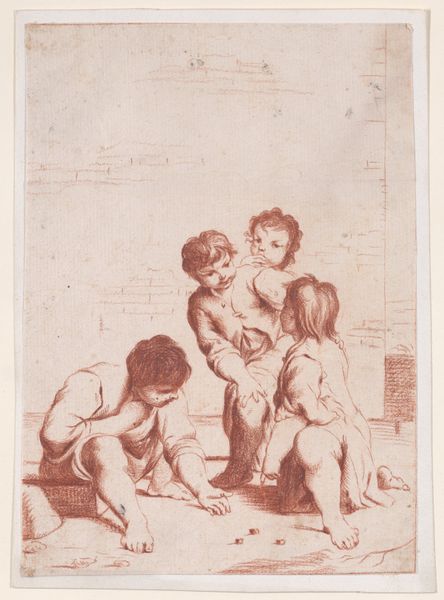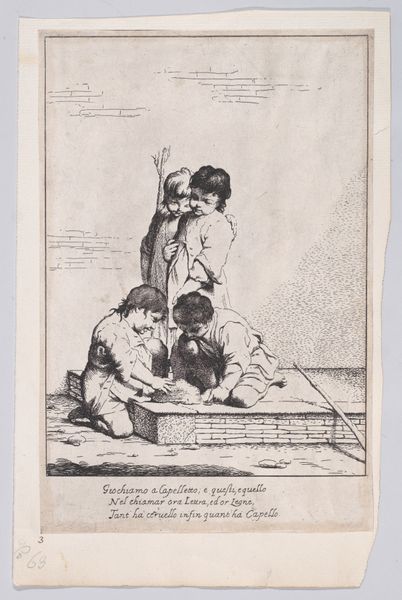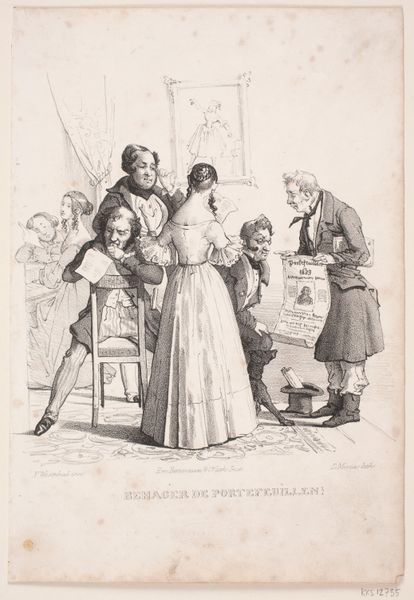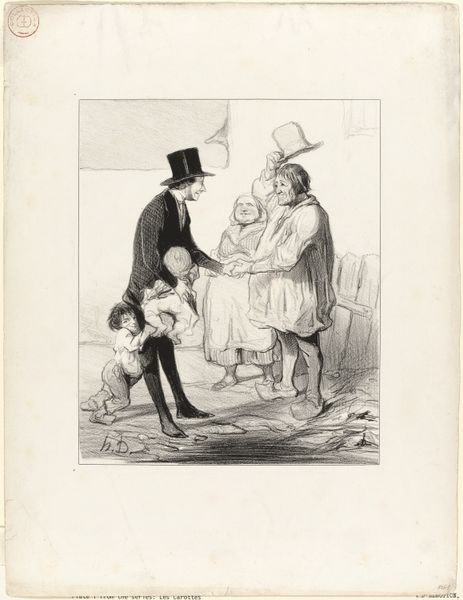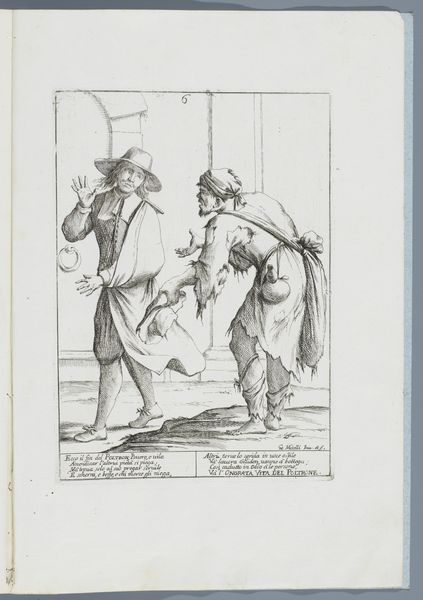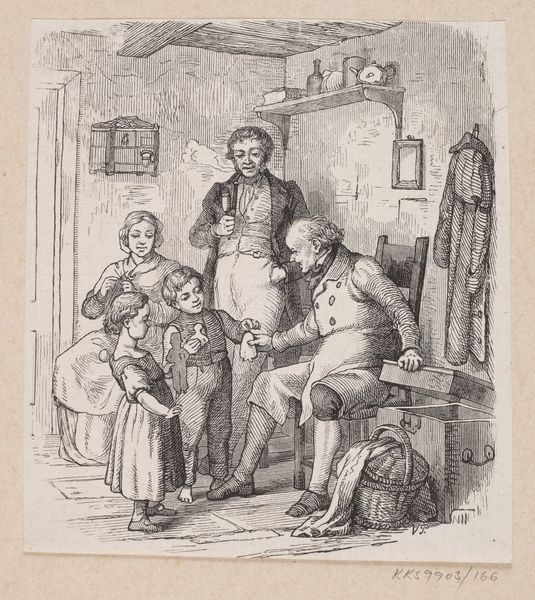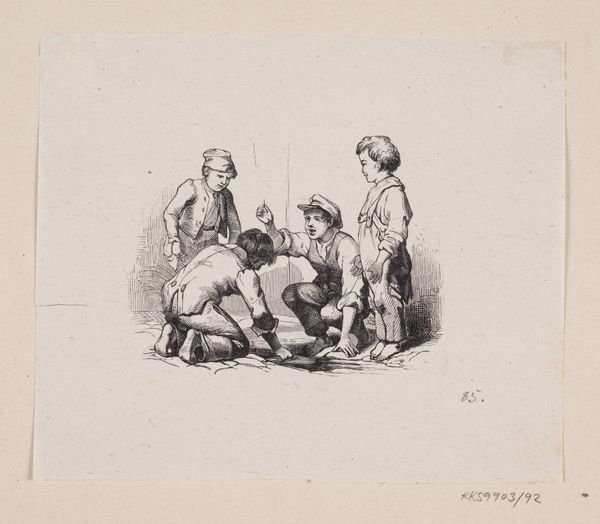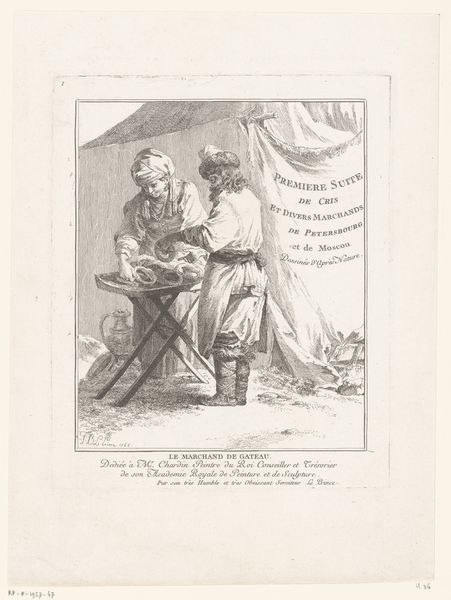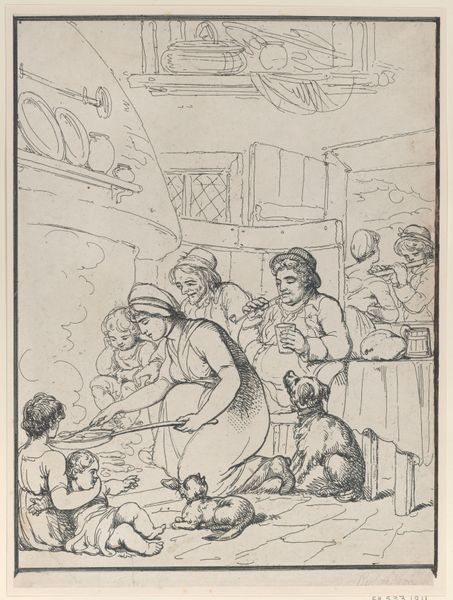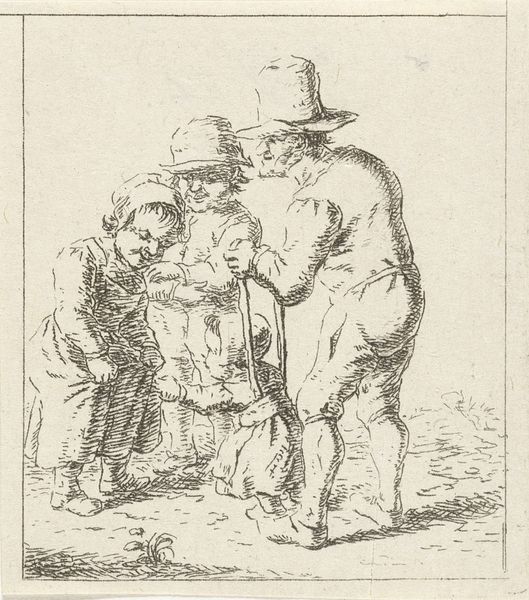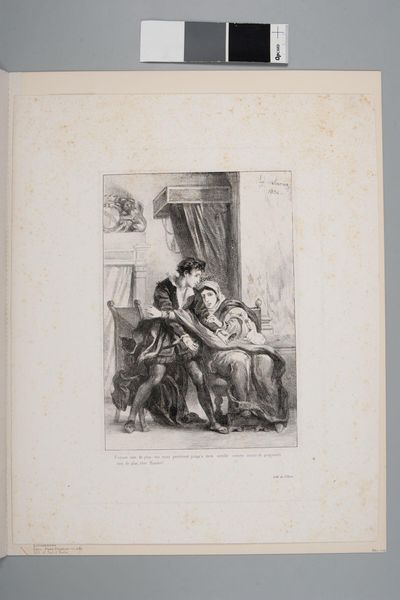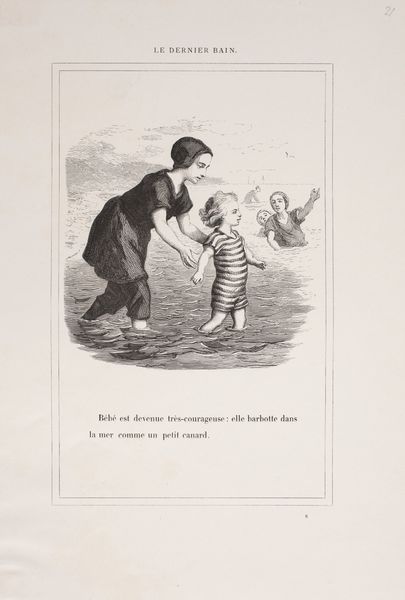
drawing, print, etching
#
portrait
#
drawing
#
narrative-art
#
baroque
# print
#
etching
#
boy
#
figuration
#
genre-painting
Dimensions: Sheet (Trimmed): 8 13/16 × 5 13/16 in. (22.4 × 14.8 cm)
Copyright: Public Domain
Editor: So, this is "Four Children Playing Dice," an etching by Giuseppe Maria Crespi from around 1705 to 1715. There's a really lovely, almost tender quality to it despite the somewhat rough lines. What do you see in this piece, particularly given the period it was created in? Curator: What I find compelling is how Crespi positions this seemingly innocent scene within the context of its time. Think about the burgeoning merchant class in the early 18th century. Games of chance, even among children, subtly reflected a broader societal fascination—or perhaps anxiety—about fortune and social mobility. Do you notice anything in the composition that might suggest this underlying tension? Editor: Maybe the crumbling wall in the background? It could symbolize the precariousness of their situation, even at a young age. Curator: Exactly! Crespi was acutely aware of the power dynamics at play within institutions and society, including family structure. Consider the Italian verses at the bottom...what do they hint at? Is Crespi legitimizing or commenting on these social structures? Are the children a reflection of the era’s societal concerns of power? Editor: I hadn’t thought about the text at all. Now that you point it out, and given the context, the poem becomes much more suggestive... the power structures within families. I suppose, looking again, the serious faces of the children might hint at a more knowing exchange. Curator: Yes. And while ostensibly a simple genre scene, this image challenges us to consider the broader social commentary at play, as the public role of art continued to evolve. How have our ideas changed as a result? Editor: I think I appreciate how a seemingly straightforward image can actually hold complex societal reflections. It encourages a more critical look at the culture that birthed it.
Comments
No comments
Be the first to comment and join the conversation on the ultimate creative platform.
